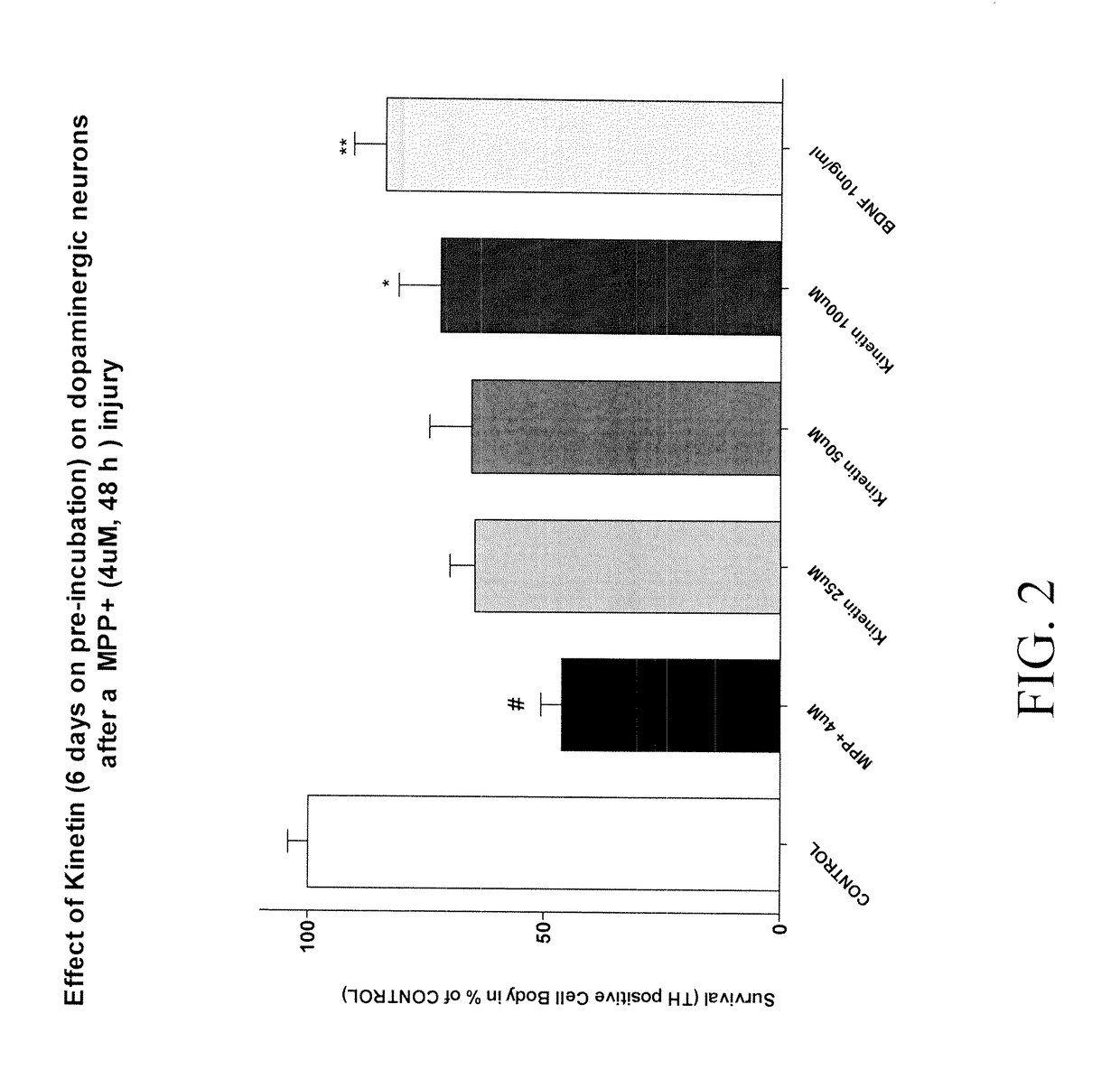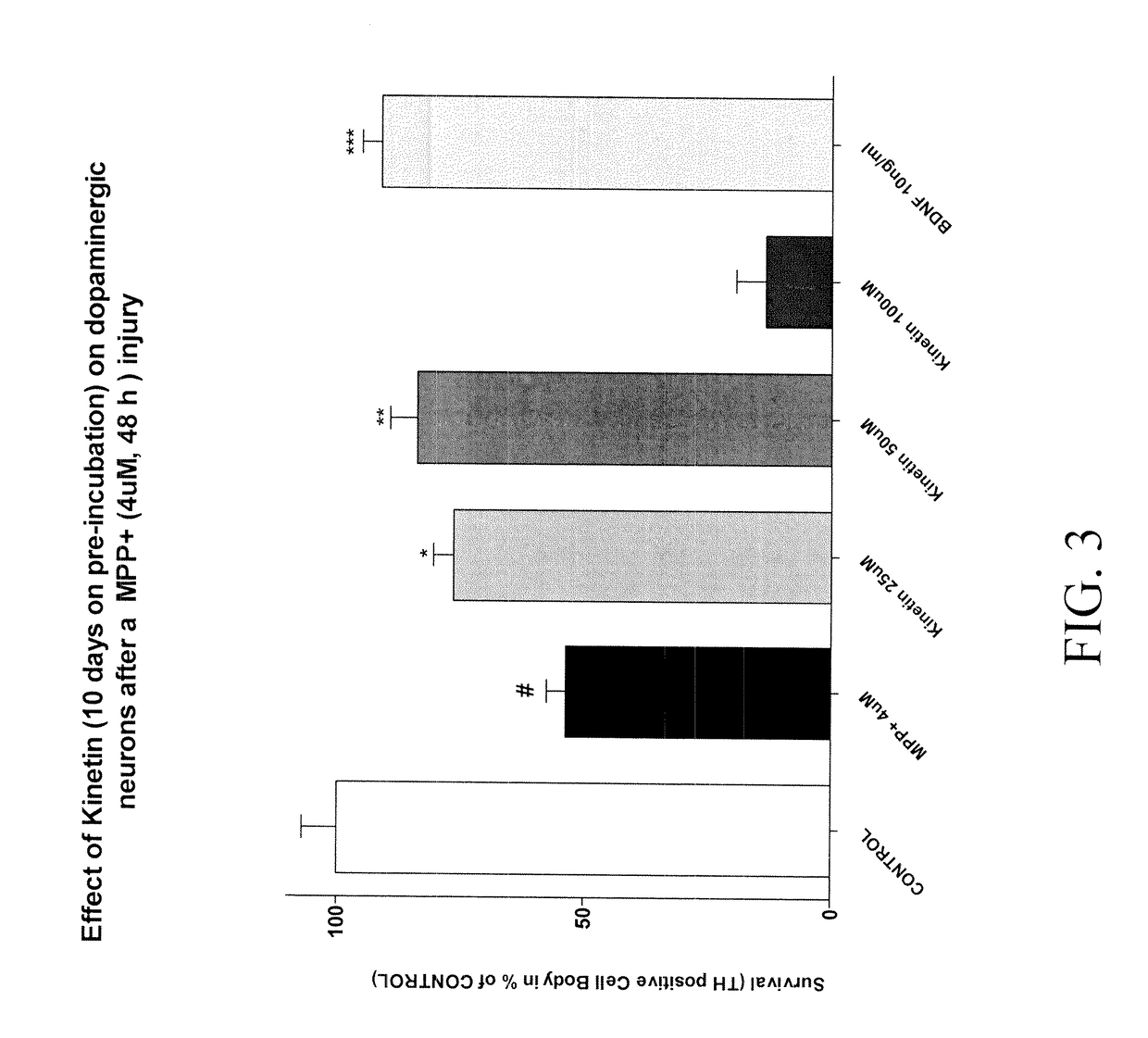Compositions and methods using the same for treatment of neurodegenerative and mitochondrial disease
a mitochondrial disease and composition technology, applied in the field of mitochondrial disease compositions and methods using the same for the treatment of neurodegenerative and mitochondrial diseases, can solve the problems of poor prognosis, ineffective treatment, and lack of disease modifying therapies currently approved to treat, so as to reduce the number or severity of symptoms, and prevent early onset of mitochondrial disease
- Summary
- Abstract
- Description
- Claims
- Application Information
AI Technical Summary
Benefits of technology
Problems solved by technology
Method used
Image
Examples
examples
[0382]
Example 1: Synthesis of Compounds:A.General procedure 1:105B.General procedure 2:111C.General procedure 3:114D.General procedure 4:115E.General procedure 5:117F.General procedure 6:118G.General procedure 7:119H.General procedure 8:119I.General procedure 9:120J.General procedure 9:121K.General procedure 10:124L.General procedure 11:125M.General procedure 12:129N.General procedure 13:129O.General procedure 19:137P.General procedure 20:138Q.General procedure 21:139R.General procedure 22:139S.General procedure 23:140Primary cultures of medium spiny neurons143MPP+ exposure and drug treatment144End point evaluation: measure of total number of TH145positive neuronsStatistics145RESULTS146A.Effect of Kinetin pre-incubated during 2 days on146dopaminergic neurons after a MPP+ injuiyB.Effect of Kinetin pre-incubated during 6 days on146dopaminergic neurons after a MPP+ injuryC.Effect of Kinetin pre-incubated during 10 days on147dopaminergic neurons after a MPP+ injuryMPP+ exposure and drug...
example 2
n of PINK1
[0629]This example demonstrates the ability of the compounds to modulat PINK1 activity in an in vitro experiment.
[0630]We grew SH-SYSY cells in 1:1 mix of DMEM and F12 supplemented with 10% FBS and Pen / Strep (IX) antibiotics on 96 well plates (˜5, 000 cells / well) at 37 degrees Celsius in 90 ul per well. We added 10 ul of 10× mix of the compounds identified below in a DMSO and medium mix to the cells. (min. 2 wells per compound per plate), allowed it to incubate for 96 hours at 37 degrees Celsius, then added 25 uM MG-132 for 16 hours (a proteasome inhibitor that triggers apoptosis; this toxicity is known to be opposed by PINK1). Following incubation with MG-132 we added 100 ul of Promega Caspase-Glo® reagent directly to each well to lyse cells and provide a luminescent Caspase 3 / 7 substrate peptide to quantify caspase cleavage activity.
[0631]All of the values in Table 2 are presented as a % of kinetin's caspase cleavage values (kinentin was run as a positive control in para...
example 3
In Vivo Parkinson's Disease Study
[0633]Parkinson's disease (PD) is the second most common neurodegenerative disorder in the United States. The predominant motor symptoms of PD including slow movement, resting tremor, rigidity, and gait disturbance, are caused by the loss of dopaminergic neurons in the substantia nigra (SN). Although the aetiology of PD remains unknown, both genetic and environmental factors appear to play a role (Paisan-Ruiz et al., 2004; Vila & Przedborski, 2004). The neurotoxicant 1-methyl-4-phenyl-1, 2, 3, 6-tetrahydropyridine (MPTP) is a specific dopaminergic neuronal toxin. MPTP is converted to 1-methyl-4-phenyl pyridinium (MPP+) by astroglia and then causes specific dopaminergic neuronal death in the SN, thus leading to the clinical symptoms of PD in humans, primates and mice (Uhl et al., 1985). For this reason, MPTP-induced dopaminergic neurotoxicity in mice is widely used as a model for PD research. It has been largely reported that MPP+ causes neurodegenera...
PUM
| Property | Measurement | Unit |
|---|---|---|
| time | aaaaa | aaaaa |
| temperature | aaaaa | aaaaa |
| temperature | aaaaa | aaaaa |
Abstract
Description
Claims
Application Information
 Login to View More
Login to View More - R&D
- Intellectual Property
- Life Sciences
- Materials
- Tech Scout
- Unparalleled Data Quality
- Higher Quality Content
- 60% Fewer Hallucinations
Browse by: Latest US Patents, China's latest patents, Technical Efficacy Thesaurus, Application Domain, Technology Topic, Popular Technical Reports.
© 2025 PatSnap. All rights reserved.Legal|Privacy policy|Modern Slavery Act Transparency Statement|Sitemap|About US| Contact US: help@patsnap.com



